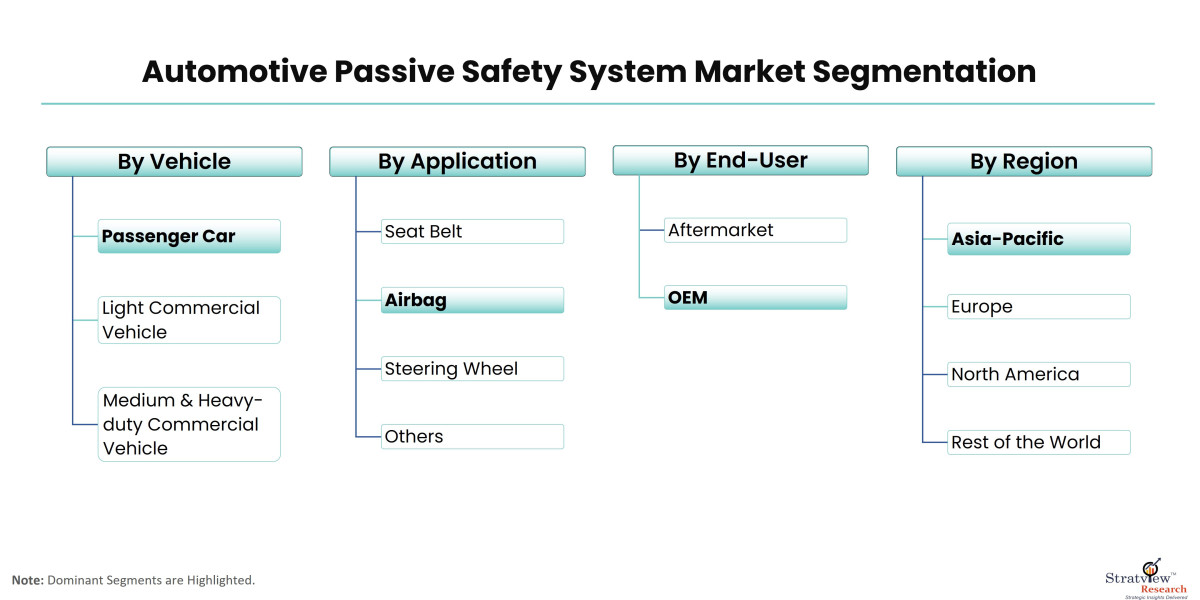The automotive passive safety system market is experiencing substantial growth, fueled by rising consumer demand for vehicle safety and strict regulatory standards. Passive safety systems, which include airbags, seatbelts, and crash sensors, are critical in minimizing injuries during accidents, enhancing vehicle safety without active driver involvement. This article delves into the primary growth drivers and the challenges shaping the future of this market.
According to Stratview Research, the automotive passive safety system market is projected to grow at a sustainable CAGR of 3.7% over the next five years to reach USD 27.9 billion in 2022.
Key Growth Drivers
1. Increasing Safety Regulations and Standards: Governments around the world have implemented stringent safety regulations for automotive manufacturers to protect passengers. Regulatory bodies, such as the National Highway Traffic Safety Administration (NHTSA) and the European New Car Assessment Programme (Euro NCAP), require automakers to incorporate passive safety systems in vehicles, which has increased demand for these technologies. As regulatory standards become stricter, particularly in developed regions, manufacturers are investing in innovative safety solutions, thus driving the market forward.
2. Rising Consumer Awareness and Demand for Safety: With heightened consumer awareness around road safety, the demand for vehicles equipped with passive safety systems is on the rise. Buyers are increasingly prioritizing safety features, with passive systems often highlighted as crucial criteria in purchasing decisions. This trend is particularly noticeable in emerging markets, where road accident rates are high, and safety awareness is growing. The rise in disposable income and the shift toward vehicles with higher safety ratings are further bolstering demand.
3. Technological Advancements in Safety Systems: Advancements in sensor technology, material science, and system integration have led to more effective and reliable passive safety systems. Innovations such as adaptive airbags, improved seatbelt designs, and advanced crash detection sensors have enhanced the effectiveness of passive safety features. These technological improvements are not only increasing the appeal of passive safety systems but also expanding their applications across different vehicle types, including electric vehicles (EVs) and autonomous cars.
Key Challenges
1. High Costs of Advanced Safety Features: The development and integration of sophisticated passive safety systems can be costly, impacting overall vehicle pricing. For budget-conscious consumers, particularly in developing regions, higher costs can be a barrier to purchasing vehicles with advanced safety features. This challenge compels manufacturers to find a balance between cost and quality in order to make passive safety systems more affordable without compromising safety.
2. Integration with Active Safety Systems: The automotive industry is rapidly adopting active safety systems like lane departure warnings, emergency braking, and adaptive cruise control. Integrating passive safety systems seamlessly with active safety technologies poses design and engineering challenges. Ensuring that both systems work cohesively for maximum protection requires significant research and development efforts.
Conclusion
The automotive passive safety system market is on a growth trajectory, driven by regulatory standards, consumer demand for safety, and technological advancements. However, high costs and integration challenges remain hurdles. As automakers address these challenges, the market will continue evolving, enhancing passenger safety and advancing automotive technology as a whole.
